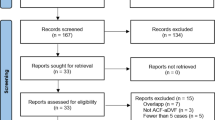Abstract
Cerebral aneurysms in complex anatomical locations and intraoperative rupture of aneurysms are challenging for neurosurgeons and anaesthetists alike. Mechanical and non-mechanical methods to reduce blood flow into aneurysms are well-recognised techniques to facilitate aneurysm exclusion from the circulation. Mechanical methods like temporary clipping of parent arteries, carotid artery ligation and endovascular balloon occlusion are commonly used in clinical practice. However, non-mechanical techniques such as rapid ventricular pacing and adenosine-induced cardiac standstill with hypotension are still emerging strategies. The aim of this study is to report our units’ experience in the use of adenosine in aneurysm clipping and arteriovenous malformation (AVM) resection and review the literature. The records of all patients who had adenosine-assisted clipping of intracranial aneurysms and AVM resections in our institute between November 2015 and December 2016 were extracted from prospectively maintained database. The following data were collected: patient demographics, comorbidities, size and location of the aneurysms or AVM, number of boluses and total dose of adenosine administered, duration of cardiac standstill and hypotension (systolic blood pressure < 60 mmHg), intraoperative and postoperative complications and outcome scores at discharge. Literature search on Embase and PubMed for the terms “adenosine and clipping”, “adenosine and aneurysm” and “adenosine and AVM” was performed. Eight aneurysms and two AVMs were identified. While both AVMs were elective procedures, half of the aneurysm clippings were on urgent basis. We used adenosine safely with spontaneous return of rhythm in all cases. Temporary clips to the parent artery were applied for brief periods in 2 patients who had pre-adenosine intraoperative rupture. We did not observe any immediate or late adverse events related to administration of adenosine. From our literature review, a total of ten case series and four case reports were identified. There were no reports on the use of adenosine in AVM resection. Transient adenosine-induced asystole is a safe and effective technique in facilitating surgical treatment of complex aneurysms and AVMs. In addition, adenosine use reduces the need, duration, and associated complications of temporary clip applications to parent arteries.
Similar content being viewed by others
References
Andrade-Barazarte H, Luostarinen T, Goehre F, Kivelev J, Jahromi BR, Ludtka C, Lehto H et al (2015) Transient cardiac arrest induced by adenosine: a tool for contralateral clipping of internal carotid artery-ophthalmic segment aneurysms. World Neurosurgery 84(6):1933–1940. doi:10.1016/j.wneu.2015.08.038
Bebawy JF, Gupta DK, Bendok BR, Hemmer LB, Zeeni C, Avram MJ, Hunt Batjer H, Koht A (2010) Adenosine-induced flow arrest to facilitate intracranial aneurysm clip ligation: dose-response data and safety profile. Anesth Analg 110(5):1406–1411. doi:10.1213/ANE.0b013e3181d65bf5
Bebawy JF, Zeeni C, Sharma S, Kim ES, DeWood MS, Hemmer LB, Ramaiah VK, Bendok BR, Koht A, Gupta DK (2013) Adenosine-induced flow arrest to facilitate intracranial aneurysm clip ligation does not worsen neurologic outcome. Anesth Analg 117(5):1205–1210. doi:10.1213/ANE.0b013e3182a6d31b
Bendok BR, Gupta DK, Rahme RJ, Eddleman CS, Adel JG, Sherma AK, Surdell DL, Bebawy JF, Koht A, Hunt Batjer H (2011) Adenosine for temporary flow arrest during intracranial aneurysm surgery: a single-center retrospective review. Neurosurgery 69(4):815–820. doi:10.1227/NEU.0b013e318226632c
Benech, C A, R Perez, G Faccani, A C Trompeo, S Cavallo, S Beninati, and M Berardino. 2014. Adenosine-Induced cardiac arrest in complex cerebral aneurysms surgery: an Italian single-center experience. Journal of Neurosurgical Sciences 58 (2). Italy: 87–94
Britz GW (2014) Adenosine-induced transient asystole. Methodist Debakey Cardiovasc J 10(4):220–223. doi:10.14797/mdcj-10-4-220
Groff MW, Adams DC, Kahn RA, Kumbar UM, Yang BY, Bederson JB (1999) Adenosine-induced transient asystole for management of a basilar artery aneurysm. Case report. J Neurosurg 91(4):687–690. doi:10.3171/jns.1999.91.4.0687
Guinn NR, McDonagh DL, Borel CO, Wright DR, Zomorodi AR, Powers CJ, Warner DS, Lam AM, Britz GW (2011) Adenosine-induced transient asystole for intracranial aneurysm surgery. J Neurosurg Anesthesiol 23(1):35–40. doi:10.1097/ANA.0b013e3181ef2b11
Hashimoto T, Young WL, Aagaard BD, Joshi S, Ostapkovich ND, Pile-Spellman J (2000) Adenosine-induced ventricular asystole to induce transient profound systemic hypotension in patients undergoing endovascular therapy. Dose-response characteristics. Anesthesiology 93(4):998–1001. doi:10.1097/00000542-200010000-00021
Heppner PA, Ellegala DB, Robertson N, Nemergut E, Jaganathan J, Mee E (2007) Basilar tip aneurysm—adenosine induced asystole for the treatment of a basilar tip aneurysm following failure of temporary clipping. Acta Neurochir 149(5):517–520. doi:10.1007/s00701-007-1128-y
Khan SA, McDonagh DL, Adogwa O, Gokhale S, Toche UN, Verla T, Zomorodi AR, Britz GW (2014) Perioperative cardiac complications and 30-day mortality in patients undergoing intracranial aneurysmal surgery with adenosine-induced flow arrest: a retrospective comparative study. Neurosurgery 74(3):267–271. doi:10.1227/NEU.0000000000000258
Khan SA, Nimjee SM, Guinn NN, Zomorodi AR, Lam AM, Britz GW, Mcdonagh DL (2013). The use of adenosine in cerebral aneurysm clipping: a review. Curr Anesthesiol Rep 3(3):210–213. doi:10.1007/s40140-013-0018-5
Layland J, Carrick D, Lee M, Oldroyd K, Berry C (2014) Adenosine: physiology, pharmacology, and clinical applications. J Am Coll Cardiol Intv 7(6):581–591. doi:10.1016/j.jcin.2014.02.009
Lee SH, Kwun BD, Kim JU, Choi JH, Ahn JS, Park W, Yun JH (2015) Adenosine-induced transient asystole during intracranial aneurysm surgery: indications, dosing, efficacy, and risks. Acta Neurochir 157(11):1879–1886. doi:10.1007/s00701-015-2581-7
Luostarinen, Teemu, Riikka S K Takala, Tomi T. Niemi, Ari J. Katila, Mika Niemelä, Juha Hernesniemi, and Tarja Randell. 2010. Adenosine-induced cardiac arrest during intraoperative cerebral aneurysm rupture.” World Neurosurgery 73 (2). Elsevier Inc.: 79–83. doi:10.1016/j.surneu.2009.06.018
Malcolm AD, Garratt CJ, John Camm A (1993) The therapeutic and diagnostic cardiac electrophysiological uses of adenosine. Cardiovasc Drugs Ther 7(1):139–147. doi:10.1007/BF00878323
Nussbaum ES, Sebring LA, Ostanny I, Nelson WB, Solomon RA (2000) Transient cardiac standstill induced by adenosine in the management of intraoperative aneurysmal rupture: technical case report. Neurosurgery 47(1):240–243. doi:10.1097/00006123-200007000-00053
Powers CJ, Wright DR, Mcdonagh DL, Borel CO, Zomorodi AR, Britz GW (2010) Transient adenosine-induced asystole during the surgical treatment of anterior circulation cerebral aneurysms: technical note. Neurosurgery 67(SUPPL. 2):461–470. doi:10.1227/NEU.0b013e3181f7ef46
Author information
Authors and Affiliations
Corresponding author
Ethics declarations
Conflict of interest
The authors declare that they have no conflict of interest.
Rights and permissions
About this article
Cite this article
AL-Mousa, A., Bose, G., Hunt, K. et al. Adenosine-assisted neurovascular surgery: initial case series and review of literature. Neurosurg Rev 42, 15–22 (2019). https://doi.org/10.1007/s10143-017-0883-3
Received:
Revised:
Accepted:
Published:
Issue Date:
DOI: https://doi.org/10.1007/s10143-017-0883-3




